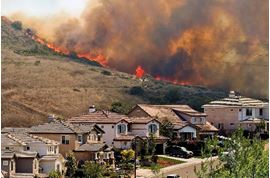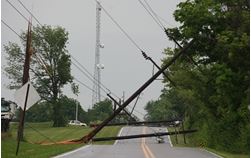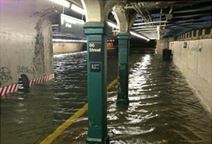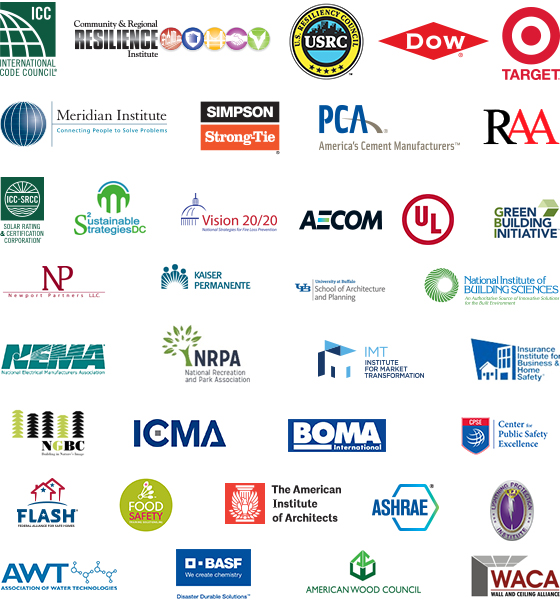ANCR Buildings Benchmark
Buildings perform a key function in communities. Many of the other community functions rely on buildings to support the services they provide. The safety, sustainability and resilience of a community’s building stock has a direct correlation to the community’s overall resilience. Communities and other users are encouraged to use the Buildings Benchmark to evaluate their current state of resilience and to identify potential actions they can take to improve resilience.
ANCR Housing Benchmark
Housing is often the largest part of rebuilding after an emergency or disaster. Having a resilient housing community and plans in place before something happens can ensure the quick and timely recovery of the community and individuals. Housing also is a key determinant of the social resilience of a community. The Housing Benchmark focuses on the availability of affordable housing, the quality of housing provided, the availability of shelter and transitional housing, and the continuity planning in place to ensure housing is available and maintained during a disaster.
Communities and other users are encouraged to use the Benchmarks to evaluate their current state of resilience and to identify potential actions they can take to improve resilience. Users are encouraged to provide feedback to ANCR to support future updates.
Across America, communities are facing unprecedented environmental, social, and economic challenges. Environmental changes are making cities more vulnerable to heat waves, rising sea levels, dangerous flooding, prolonged droughts, and other extreme weather events. Social unrest in the nation’s urban centers is creating friction between residents, businesses, and government institutions. The precarious economic recovery is also complicating these challenges, as real wages fail to keep pace with rising costs, unemployment remains high, and the income gap widens.
 When disaster strikes, all of the gears
of the local system must continue to function. A city with the lights on cannot effectively operate if
the streets are impassable. A business that has survived hurricane winds cannot thrive if the banking
networks have crashed. A household with running water cannot be sustained if the grocery store shelves
are bare. Communities are complex, interconnected systems that urgently need a way to comprehend what it
means to be resilient, and their need to become more resilient could not be greater or more pervasive.
When disaster strikes, all of the gears
of the local system must continue to function. A city with the lights on cannot effectively operate if
the streets are impassable. A business that has survived hurricane winds cannot thrive if the banking
networks have crashed. A household with running water cannot be sustained if the grocery store shelves
are bare. Communities are complex, interconnected systems that urgently need a way to comprehend what it
means to be resilient, and their need to become more resilient could not be greater or more pervasive.
 There are over 89,000 communities
across the country – cities, towns, and counties ranging in size, population, demographics, economic
priorities, environmental challenges, investment opportunities, and financial constraints. Governments
can lead, encourage, facilitate, assist, and even hinder communities as they seek to become more
resilient, but communities cannot expect government alone to make the investments necessary to be truly
resilient. Governments, organizations, businesses, the faith-based community, individuals, and families
must all contribute to this effort – and all have the potential to lead.
There are over 89,000 communities
across the country – cities, towns, and counties ranging in size, population, demographics, economic
priorities, environmental challenges, investment opportunities, and financial constraints. Governments
can lead, encourage, facilitate, assist, and even hinder communities as they seek to become more
resilient, but communities cannot expect government alone to make the investments necessary to be truly
resilient. Governments, organizations, businesses, the faith-based community, individuals, and families
must all contribute to this effort – and all have the potential to lead.
Cities, businesses, and households need support to be able to effectively adapt to increasing environmental, health, economic, and social hazards. Every day, communities and businesses depend upon the ability to use roads, access hospitals, get to work and school, receive mail, and communicate with friends, family, colleagues, customers, and clients. None can ultimately succeed unless all succeed. While some tools exist to help cities and communities become more resilient, no systemic resiliency toolkit or benchmarking system exists to help localities understand where they may be vulnerable. The Alliance for National & Community Resilience (ANCR) is developing such a tool to support governments, businesses, and people across the country.
Community Resilience Benchmarks
 The Community Resilience Benchmarks
(CRB) system is intentionally cross-sector, encompassing elements including, but not limited to,
communications, housing, water, food distribution, energy, waste management, finance, education, public
health, transportation, public safety, and business. This will consolidate existing assessments,
certifications, and research to serve as a useful, centralized tool to help communities, businesses,
governments, and people make decisions to become more resilient, based on consistent and comparable
information – on where to live, where to invest, what to prioritize, and how to measure progress.
The Community Resilience Benchmarks
(CRB) system is intentionally cross-sector, encompassing elements including, but not limited to,
communications, housing, water, food distribution, energy, waste management, finance, education, public
health, transportation, public safety, and business. This will consolidate existing assessments,
certifications, and research to serve as a useful, centralized tool to help communities, businesses,
governments, and people make decisions to become more resilient, based on consistent and comparable
information – on where to live, where to invest, what to prioritize, and how to measure progress.
The ANCR Approach
ANCR will collect and integrate the best ideas on measuring the resilience of each community system to form preliminary CRBs. Preliminary CRBs will be created, using approaches that best represent the resilience of each system. A national workshop subsequently will convene leaders from multiple sectors to finalize the comprehensive CRB system and plan a path forward for further development and application of community resilience benchmarks.
ANCR will provide the information that communities need to understand their resilience. With understanding comes the incentive to do better, to fix problems, and to address challenges. It will help mayors, business leaders, infrastructure operators, health care systems, as well as teachers, parents and social service providers find the tools and processes to cooperate across the entire fabric of the community so that no single element limits the potential of a community to thrive. Ultimately, decision-making will be informed and enhanced by this resilience benchmarking system.
ANCR will help build America into a country that can face the challenges of the 21st Century – one community at a time.
ANCR is currently building partnerships and seeking financial support to develop its community resilience benchmarking system. Partners already include key organizations, associations, businesses, and individuals across the previously identified sectors. ANCR seeks a variety of foundation, private sector, and government support in order to complete this critical work.

